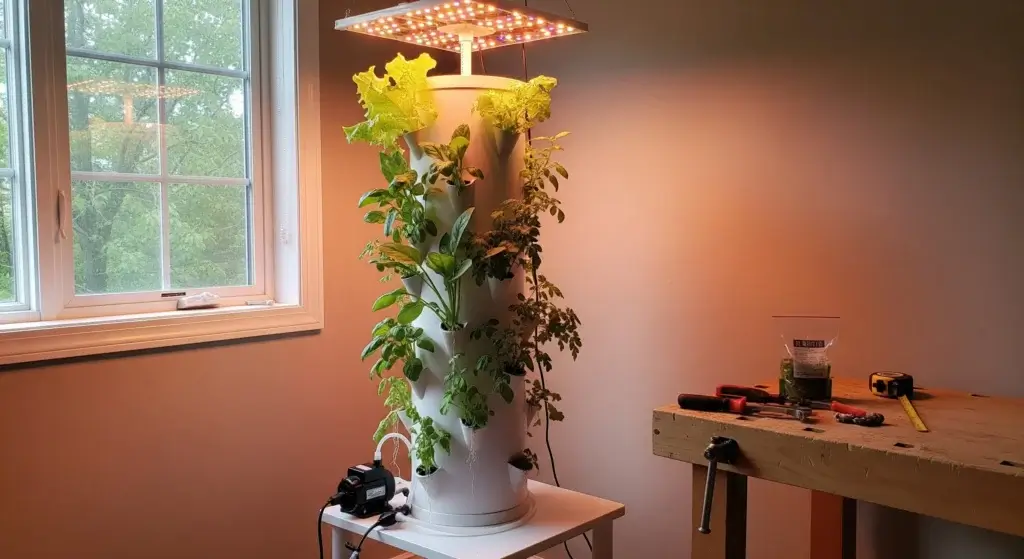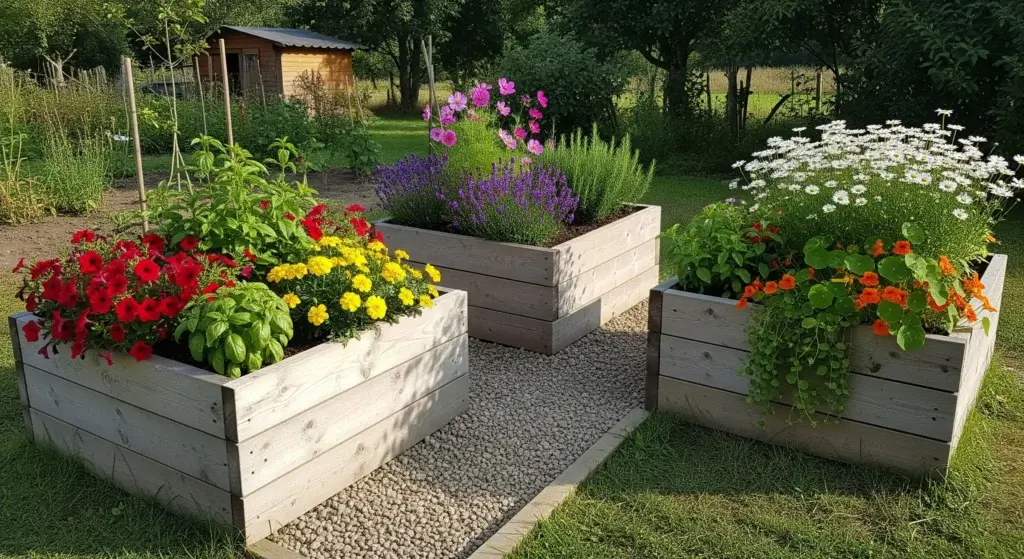
As the world becomes increasingly aware of the importance of sustainability and reducing waste, creative and innovative ways to reuse and recycle materials have become a popular trend.
One such creative project is a DIY herb garden made from recycled materials.
Not only is it a great way to reduce waste, but it’s also a fun and rewarding project that can add a touch of greenery to your home or office.
In this article, we’ll explore the advantages of a DIY recycled herb garden, provide tips on choosing and preparing your recycled materials, and offer guidance on planting and caring for your herbs.
Advantages of a DIY Recycled Herb Garden
There are many reasons to love a DIY recycled herb garden! Here’s a breakdown of the key advantages:
Enhanced flavors with homegrown herbs
When you grow your own herbs at home, you’re in for a treat!
The flavors of freshly harvested herbs are incomparable to store-bought options.
Whether it’s basil, mint, or rosemary, homegrown herbs add a burst of freshness and aroma to your favorite dishes, elevating their taste to new heights.
- Read also: No Yard Needed! DIY Herb Garden for Small Apartment
- Read also: A Comprehensive Guide: Growing Cauliflower in Containers
Budget-friendly and personalized experience
Creating your own herb garden doesn’t have to break the bank.
By using recycled materials for planters, you can significantly reduce costs while adding a personal touch to your gardening endeavor.
Plus, the DIY aspect allows you to tailor your garden to fit your space and style perfectly, making it a fun and rewarding project.
Eco-conscious gardening for sustainability
Repurposing recyclables for your herb garden isn’t just budget-friendly; it’s also eco-friendly.
By giving new life to old materials, you’re contributing to a more sustainable lifestyle and reducing waste.
Additionally, bypassing commercially produced planters aligns with eco-conscious principles, making your gardening efforts even more environmentally friendly.
Versatile space-saving solutions
No matter how limited your space may be, there’s always room for a recycled herb garden.
With containers of all shapes and sizes, you can transform balconies, patios, windowsills, or even indoor spaces into flourishing herb gardens.
This versatility ensures that everyone can enjoy the benefits of homegrown herbs, regardless of their living situation.
Cultivating a sense of achievement and nature connection
Watching your herbs grow and thrive under your care is incredibly rewarding.
From nurturing seeds to witnessing their growth into lush plants, every step of the gardening journey brings a sense of accomplishment and satisfaction.
Plus, tending to your plants fosters a deeper connection to nature, reminding you of the beauty and resilience of the natural world.
Educational opportunities for all ages
A DIY recycled herb garden isn’t just about growing herbs; it’s also a fantastic educational tool, especially for children.
Engaging kids in the gardening process teaches them valuable lessons about plant growth, sustainability, and healthy eating habits.
Plus, it ignites their curiosity and appreciation for nature, laying the foundation for a lifelong love of gardening and environmental stewardship.
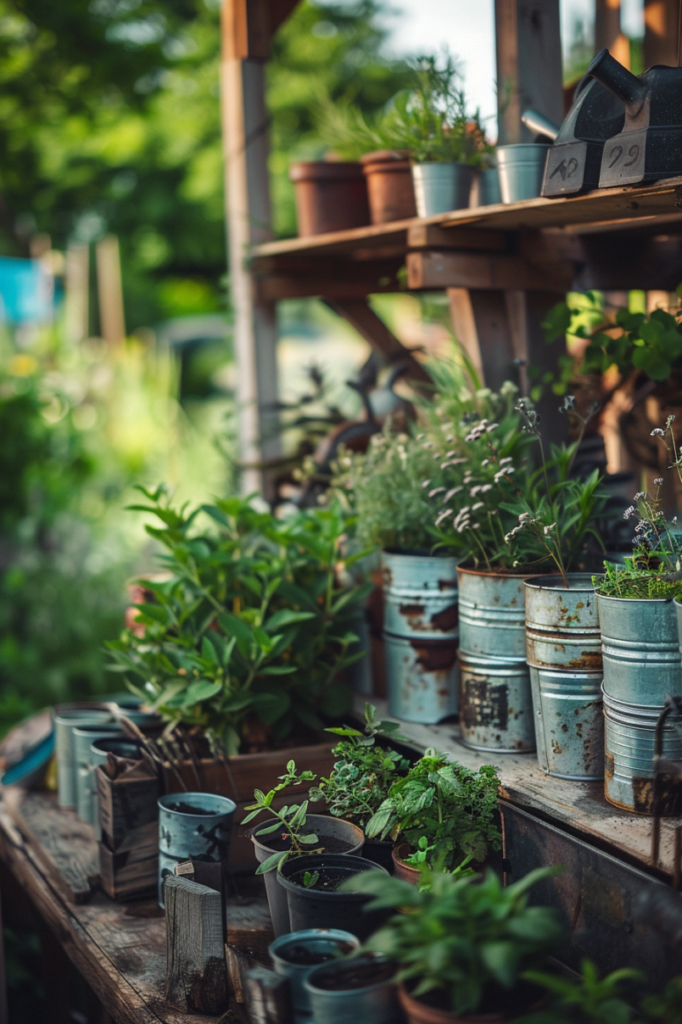
Choosing Your Recycled Materials
When considering recycled materials for your DIY projects, the options are abundant and versatile.
Here’s a closer look at some ideas to inspire your creativity:
Tin cans
Tin cans offer a simple yet effective solution for creating a DIY herb garden.
Not only are they readily available, but they are also easy to clean and repurpose.
With a quick wash and some creativity, tin cans can be transformed into charming herb planters.
Consider painting them with vibrant colors or decorating them with patterns to personalize your garden.
Coffee mugs
Repurposing coffee mugs as planters is a clever way to give them a new lease on life.
These sturdy containers are already designed to hold liquids, making them ideal for housing small plants or herbs.
With their wide opening and deep reservoir, coffee mugs provide ample space for plant roots to grow and thrive.
Get creative with your mug selection, opting for colorful designs or quirky shapes to inject personality into your herb garden.
Teapots
Teapots offer a whimsical and elegant option for showcasing your green thumb.
Their unique shape and charming aesthetic make them a standout choice for herb gardens.
Whether vintage or modern, teapots add a touch of sophistication to any space, be it a kitchen countertop or a desk in your office.
Planting herbs in teapots not only serves a practical purpose but also elevates the visual appeal of your indoor garden.
Plastic bottles
Transforming plastic bottles into planters is not only eco-friendly but also incredibly versatile.
These lightweight containers are easy to cut, clean, and customize to fit your desired size and shape.
With a bit of creativity and ingenuity, plastic bottles can be repurposed into hanging planters, vertical gardens, or even self-watering systems.
Their durability makes them suitable for both indoor and outdoor use, providing a budget-friendly option for gardening enthusiasts.
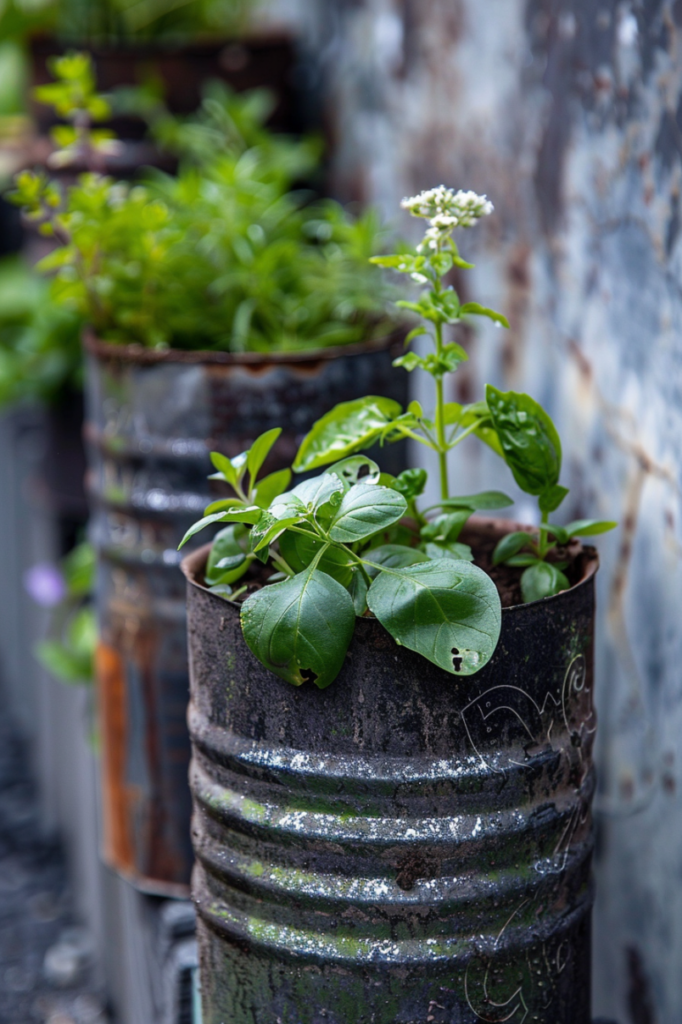
Preparing Your Recycled Containers
Once you’ve selected your recycled materials for planting, it’s essential to prepare them properly to create a healthy environment for your plants.
Here are detailed steps to help you get started:
Creating drainage holes
Drainage is crucial for preventing waterlogged soil, which can lead to root rot and other plant health issues.
Use a drill, hammer, or sharp object to create drainage holes in the bottom of your containers.
These holes allow excess water to escape, ensuring that the soil remains adequately aerated and moisture levels are balanced.
Cleaning thoroughly
Before planting, it’s essential to clean your recycled containers thoroughly to remove any dirt, residue, or bacteria that may harbor pests or disease.
Wash the containers with warm, soapy water, using a scrub brush or sponge to scrub away any stubborn grime.
Rinse the containers thoroughly with clean water and allow them to dry completely before proceeding with planting.
Adding decorative touches (optional)
Once your containers are clean and prepared, you have the option to add decorative touches to personalize them and enhance their visual appeal.
Get creative with paint, markers, stickers, or other embellishments to give your containers a unique and customized look.
Consider incorporating colors, patterns, or designs that complement your home decor or reflect your personal style.
Planting Your Herbs
Once your containers are prepared, it’s time to plant your herbs. Here are a few tips to get you started:
Choosing the right potting mix
Selecting the appropriate potting mix is essential for providing your herbs with the nutrients and drainage they need to thrive.
Opt for a potting mix specifically formulated for herbs, which typically contains a balanced blend of organic matter, perlite, and other soil amendments.
Ensure that the potting mix is well-draining to prevent waterlogged soil, as excessive moisture can lead to root rot and other plant issues.
Planting seeds or seedlings
Decide whether you want to start your herb garden from seeds or seedlings, depending on your preference and gardening experience.
If planting seeds, follow the instructions on the seed packet regarding planting depth and spacing.
Create small indentations in the potting mix with your finger or a small tool, and place the seeds in the holes according to the recommended spacing.
Gently cover the seeds with a thin layer of potting mix and water lightly to ensure good seed-to-soil contact.
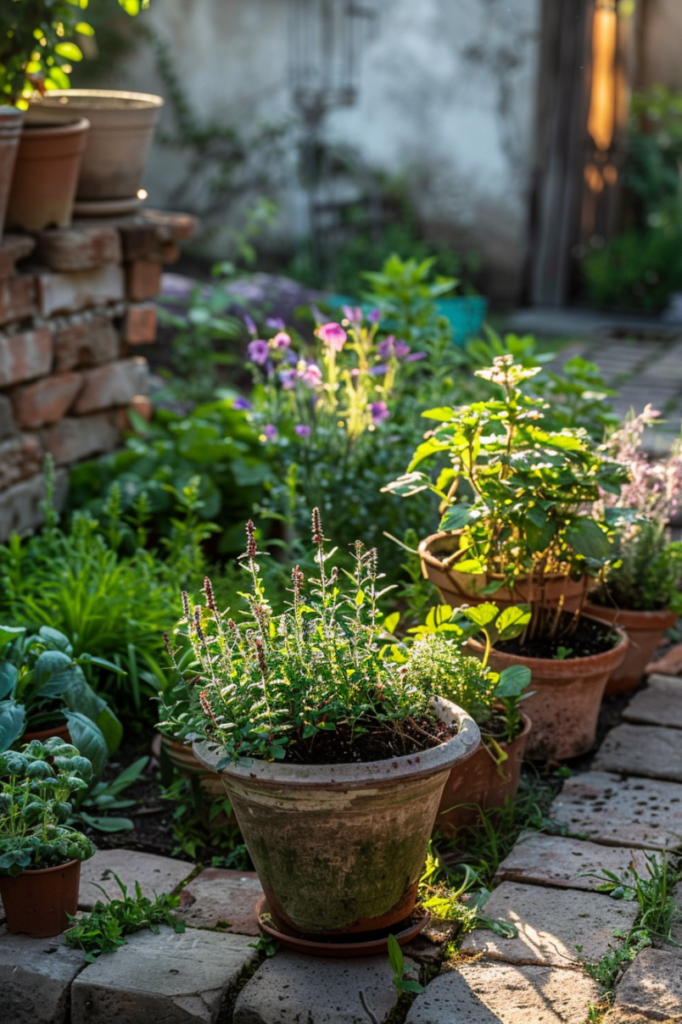
Caring for Your Herb Garden
Caring for your herb garden is essential to ensure that your plants thrive and provide you with a plentiful harvest of fresh herbs.
Here are some detailed tips to help you care for your herb garden effectively:
Watering
Proper watering is crucial for the health and vitality of your herbs.
While it’s important to keep the soil consistently moist, overwatering can lead to root rot and other issues.
Before watering, check the moisture level of the soil by inserting your finger into the soil up to the first knuckle.
If the soil feels dry, it’s time to water.
Use a watering can or hose to water the herbs at the base of the plants, avoiding wetting the foliage.
Sunlight
Most herbs thrive in full sunlight, so it’s essential to place your herb garden in a location that receives plenty of sunlight.
Aim for at least 6-8 hours of direct sunlight per day for optimal growth and productivity.
If you’re growing herbs indoors, place them near a south-facing window where they can receive ample sunlight.
If natural light is limited, consider supplementing with grow lights to ensure that your herbs receive adequate light levels for healthy growth.
Fertilizing
Fertilizing your herbs regularly helps replenish nutrients in the soil and promotes robust growth.
Choose a balanced, water-soluble fertilizer specifically formulated for herbs, and follow the manufacturer’s instructions for application rates.
Avoid over-fertilizing, as excessive nutrients can lead to nutrient imbalances and negatively impact plant health.
Apply fertilizer every 4-6 weeks during the growing season, tapering off in late summer to avoid encouraging excessive growth before winter dormancy.
Pruning and harvesting
Regular pruning and harvesting are essential for maintaining the health and productivity of your herb garden.
Prune your herbs regularly to encourage bushy growth and prevent them from becoming leggy or overcrowded.
Use clean, sharp scissors or pruning shears to snip off excess growth, focusing on removing any dead or yellowing leaves.
Harvest your herbs frequently to encourage new growth and ensure a continuous supply of fresh leaves for culinary use.

- Read also: From Trash to Table: DIY Container Ideas For Herbs
- Read also: Grow Your Own! DIY Vegetable Garden for Beginners
Conclusion
A DIY recycled herb garden is a creative and sustainable way to grow your favorite herbs.
Not only is it a great way to reduce waste, but it’s also a fun and rewarding project that can add a touch of greenery to your home or office.
With these tips and a little creativity, you can create a beautiful and functional herb garden from recycled materials. So why not give it a try?


